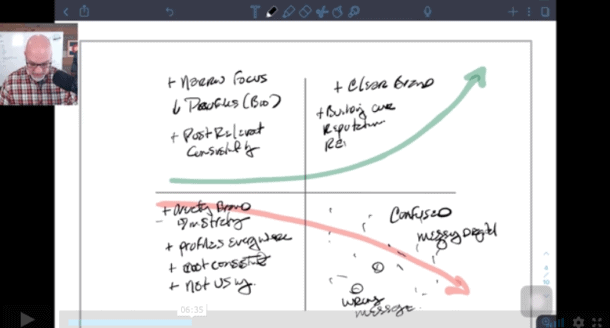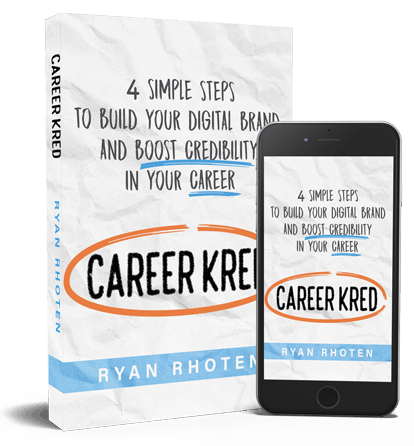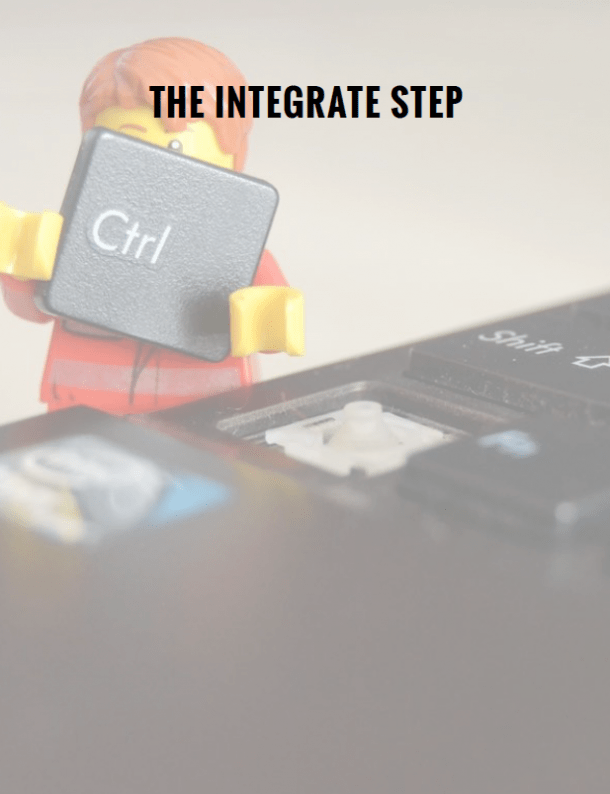Today on the BRAND New You show I went solo to talk about a topic I get asked about quite often – Master Minds
Recently I sent out an email to my newsletter list and asked for feedback and suggestions for topics to cover on the podcast.
I received several suggestions and will cover all of the topics submitted in upcoming shows but the topic of masterminds won the Pareto chart battle.
So let’s get into this.
[smart_track_player url=”http://traffic.libsyn.com/thebrandnewyoushow/Master_Minds.mp3″ title=”Master Minds – All your questions answered” artist=”Ryan Rhoten” color=”f5811f” download=”false” social=”true” social_twitter=”true” social_facebook=”true” social_gplus=”true” social_linkedin=”true” social_stumble=”true” social_pinterest=”true” social_email=”true” ]
WHAT IS A MASTERMIND
If you were to ask ten different people to define a master mind you’ll probably get ten different answers. I always refer back to the book Think and Grow Rich by Napoleon Hill.
Written in 1937 as a personal development and self-improvement book, Think and Grow Rich is much more than a book on the secrets of how to gain wealth.
It’s a philosophy that can be used to help people succeed in all lines of work.
The book consists of 13 principles for personal achievement one of which is the Power of the Master Mind.
According to Mr. Hill a Master Mind occurs:
“When a group of individual brains are coordinated and function in Harmony, the increased energy created through that alliance, becomes available to every individual brain in the group.”
Or said another way it's like a brainstorming session on steroids.
Everyone in the group is focused on a single purpose. One idea fuels engagement from other team members and before you know you are all functioning in perfect harmony working to solve or resolve the challenge at hand.
When this happens Claudia Alutcher might say the idea machine in the room is running at full capacity.
This is the power of the mastermind. Surrounding yourself with a group of like-minded individuals for advice, counsel, and cooperation around a single purpose.
My single definite purpose to educate and elevate the personal brands and online reputations of career-minded professionals so they get recognized for their expertise by becoming an authority in their niche.
Or as I like to say, become the google of their niche.
HOW TO START YOUR MASTERMIND
Jim Rohn once said:
“You are the average of the five people you spend the most time with”
If you’re thinking about masterminds, mentally you might be ready but you have to ask yourself who do your spend the most time with today?
Keep in mind the people you hang out with in your current job all know the same stuff you do, something that David Fisher pointed out during our discussion.
If you want to learn new stuff you need to hang out with new people.
So how do you do this? How do find those like-minded people?
Here are a few suggestions I can offer.
1 – Attend a local meet up
Search on meetup.com or Facebook to find any meetups happening in your area.
Anyone can attend a meetup. You don’t need an invitation. Take the time to meet and speak with as many attendees as you can.
Madalyn Skylar would remind you to take your business cards.
2 – Host a Meetup
If there are no scheduled meet ups consider hosting your own. Use Meetup.com and/or Facebook to schedule and post your events.
As the host make sure you are adding value to these events. Have an agenda and present on a topic.
There’s nothing worse than attending a meet up under one pretense only to have it turn into a drinking party.
3 – Attend a conference
I’m a fan of attending conferences and this is how I meet all of the people in my mastermind groups. If you think about it, they are the single best place to find other like-minded individuals. After all, most conferences are centered around a particular topic.
Use the opportunity to meet and talk to others about their interests. My podcasts with Madalyn Skylar and David Fisher will help get the most from attending a conference from the stuff to take to how to network without coming across as creepy.
4 – Join an online community
Online communities can be a great way to find people interested in joining a mastermind group.
The key is to be active in the group. Joining by itself won’t yield success. Most online communities have forums. Get in there, ask questions give suggestions and add value in the best way you know how.
Eventually, you will strike a chord with some individuals and a natural trust and friendship will emerge.
A WORD OF CAUTION
Don’t force your mastermind into existence.
Finding the right fit will take some time. If you do it right you may rotate through a few people but eventually, you will find the people who will help each other succeed.
So once you’ve found those people you can now hold your first mastermind session.
ESTABLISH MASTERMIND GUIDELINES
Once you’ve found your peeps I encourage you to get started right away. Strike while the iron is hot because the more time that passes between the idea and action the more likely it is the idea will Fizzle out.
Both of the masterminds I’ve been in started with two weeks of the initial idea.
What did we do during those two weeks? We prepared and we created guidelines.
The guidelines are meant to hold the group accountable not constrain it.
Here are the actual guidelines I’ve used in my mastermind groups.
1 – Define a time to meet
It’s critical to set aside a specific time to meet every week. By setting aside a specific time each week for your mastermind, you are creating accountability.
Accountability is a key tenet to any mastermind.
Frequency depends on your group, the number of people in it and frankly how serious you are about it. The more people you have the more difficult it will be to coordinate a schedule for everyone.
At first try to pick a time that works for everyone. If you can’t find a time that works despite multiple attempts you may need to just pick the time that works for most.
Whichever way you go once the time is selected stick to it.
This guideline might look something like this.
“Each meeting will be held on Mondays at 9:30 pm Eastern for 60 minutes. Note the meeting may last longer as long as all members agree and all members can stay on the call.”
2 – Respect the mastermind group members
The best way to demonstrate your respect is to show up at the designated time on time.
At the same time, “life happens”. Unexpected things will pop up. When they do it’s important to communicate this with your fellow members.
A guideline for this item has been stated as:
“It is expected that each member is present and on time for the meeting. If someone cannot attend please email me ahead of time. Alternatively, you can send out a tweet to everyone.”
For members who can’t make the meeting, I recommend recording it so they can listen in a be prepared for the next meeting.
This is also a good place to define the number of acceptable absences any member may have before being asked to leave the group.
3 – Participation
Masterminds don’t work if no one or only one person participates. You don’t participate you can’t add value and you may as well not be in the mastermind.
“Everyone will have an opportunity to speak within the framework of the group. It works best if each member participates equally.”
4 – Support not criticism
If you pick the right members of your group is one is more academic but I include it anyway.
“Everyone is here to support each other. Please keep in mind there will be constructive criticism, but there should be no putting down, or criticism of other group members. It should be an open and positive experience for all.”
5 – Positivity
There will be times when you feel down and depressed about your progress. That’s ok. It’s part of growing a personally and professionally.
When you sense a team member in this funk don’t feed the fire remain positive.
“It is important to note, the mastermind is not just for advice, but it becomes a positive place where you can manifest your goals with a group. Every person makes it their intention to support the individual goals and help manifest them.”
6 – Vegas Baby!
Like the commercial says, what is happens in the mastermind, stays with the mastermind.
HOW TO CONDUCT YOUR MASTERMIND SESSIONS
Conducting your mastermind may be rough initially but will become more natural over time. Your initial success will be dependent on how well your guidelines are followed and of course participation.
Your first decision in conducting your mastermind will be made for you based on your team members. If everyone is local your mastermind can be held at someone’s home.
Of there’s not enough room a local coffee shop or co-working space will work well. You really just need a place where you can all fit and are free to speak openly.
If your group consists of individuals from other locations you’re going to have to go online. Here are a couple of suggestions for holding your mastermind online include:
1 – Google hangouts
2 – Fuze or another webinar like platforms (limited to certain people)
Use a platform that works best with your group.
YOUR MASTERMIND AGENDA
In order to keep on point and be respectful of each others time you will need an agenda. Before you start the meeting assign a scribe for note taking and a host for the meeting.
The host will not only keep the team on point as a time-keeper but will also literally host the meeting if it’s online.
A typical agenda will consist of the following five sections. The timing for each item will be somewhat determined by the number of team members. More team members may mean less time for certain sections.
The hot seat section should not be shortened, however unless the person on the hot seat agrees in advance.
1 – Welcome/Agenda: 5 Minutes
Casual chit chat. This is the time to talk about non-master mind stuff. Cool stuff you did or learned, what you children did, etc.
2 – Wins for the week: 20 minutes
Each member states their wins from the previous week. Did you get your blog post out on time? Did you get your podcast out? Did you update you're about page? Finish your video course?
While your time-keeper needs to track the time here I recommend using an automated system like http://online-stopwatch.com When the time is up there will be a very audible sound which everyone will hear.
3 – Hot Seat One Member (rotates weekly): 15 minutes
This is a weekly rotating, metaphorical, seat in which one member’s business, challenges or issues will be reviewed by the team.
This portion is most effective if everyone knows in advance what they will be reviewing.
In this way, they can prepare in advance and have their ideas and suggestions ready. Waiting until the meeting to disclose the topic is not helpful.
The hot seat is where the collective brains come together, are coordinated and function in harmony.
This is the essence of the mastermind. This is where the “magic” happens. This is also where you as the person in the hot seat will feel the most defensive or vulnerable.
The point is to expand on your ideas by listening and taking in the collective wisdom of the group. Fight the urge to defend or dismiss what is being said.
Take it all in with an abundance mindset and you will be better off because of it.
4 – Final Question: 10 Minutes
During the course of the mastermind, it may become obvious that what is being suggested is beyond the current capabilities of the person in the hot seat.
That’s why in my mastermind sessions we also ask – Who specifically can help resolve the problem?
This allows the person in the hot seat to know they are not alone and will have the support they need to make the suggestions come to fruition.
Note: The person in the hot seat can choose to wrap this section into their hot seat discussion time if they choose.
5 – Goals for the next week: 10 minutes
State your goals for the upcoming week. These will usually be the goals you will report on as a win the following week.
SUMMARY
And that’s it. Everything I know about starting, running and participating in a mastermind. I’ve been fortunate to be in two mastermind groups as I started down my current path.
They have helped shaped my thinking, my single define purpose and frankly me as a person both personally and professionally.
If you pick the right members they will become a part of your family just like for me Steve Stewart, Dustin Hartzler, Joseph Michael, Brand Heavey and Michael Faron have become for me.
Good luck getting started. If you other questions please leave a comment below.
I’ll answer every question and by keeping your comments on the blog others will be able to see the questions and the answers all in one place.
That’s all the time we have left for today.
I’ve been Ryan. And I’m out.






